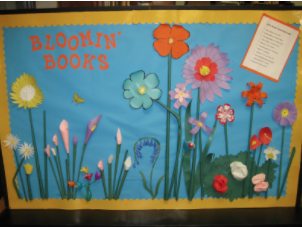
Lino Narrative Summary

Overview
Lino offers the capacity to post sticky notes on a canvas using a web browser. The teacher may create a canvas and share the link with the class. The students do not have to login to collaborate. Students may collaboratively post color-coded sticky notes, share images, links etc. to the canvas. Very simple tool to use with students and highly engaging!
Learning Objectives
Students will:
- Be able to use a series of questions to collaboratively highlight important
elements of specific patterns found in the narrative text.
-
Be able to post sticky notes on the Lino canvas.
Vocabulary
Vocabulary Words:
- Canvas: The canvas is the work area where the students will post sticky notes and images.
Pre-planning
To prepare for this lesson:
- Preview a video on Lino for a quick overview.
- Watch this video for tips on using Lino virtually.
- Create a Lino account and canvas for use with your students.
Accommodations
See the Accommodations Page and Charts on the 21things4student website in the Teacher Resources.
Steps
Directions for this activity:
-
The teacher will Introduce how to navigate to Lino and what Lino is. Model how to post a sticky note and warn students that it sometimes takes a minute or so before they see a sticky note pop up on their screen.
-
Read or view a narrative story to the class and have them follow along on a written copy. This may be digital for use with copy/paste if desired.
-
Discuss the narrative frame questions and explain that students will work collaboratively to answer these questions. Assign questions to groups. Questions and answers may be color-coded by changing the color of the sticky.
-
Use the frame questions from Dean, C. B., & Marzano, R. J. (2012). Classroom instruction that works: research-based strategies for increasing student achievement. (p. 84) Alexandria, VA: ASCD.
-
Who are the main characters and what distinguished them from others
-
When and where did the story take place? What were the circumstances?
-
What prompted the action in the story?
-
How did the characters express their feelings?
-
What did the main characters decide to do? Did they set a goal, and, if so, what was it?
-
How did the main characters try to accomplish their goal(s)?
-
What were the consequences?
-
-
Students work and post responses to the questions.
-
Discuss responses. Look for teaching points on taking out information that is not important, repetitive information, replaces lists of words with one word that describes the list, and topic sentences. Stickies may be rearranged or edited as needed.
-
Students then may use this tool to complete a similar summary independently.
Assessment Options
Different options for assessing the students:
- Observations
- Check for understanding
- Free rubric on TpT
- Summarizing Rubric for Younger Students
- 4 The student finds the most important pattern in the information. The student also finds other less important patterns.
3 The student finds the most important pattern in the information.
2 The student finds some parts of the most important pattern n the information. The student misses some important parts.
1 The student does not find the most important pattern in the information.
0 The student does not try to do the task.From: Dean, C. B., & Marzano, R. J. (2012). Classroom instruction that works: research-based strategies for increasing student achievement. (p. 77) Alexandria, VA: ASCD.
- 4 The student finds the most important pattern in the information. The student also finds other less important patterns.
MITECS COMPETENCIES & ISTE STANDARDS
MITECS: Michigan adopted the "ISTE Standards for Students" called MITECS (Michigan Integrated Technology Competencies for Students) in 2018.
Global Collaborator
7c. Students contribute constructively to project teams, assuming various roles and responsibilities to work effectively toward a common goal.
Devices and Resources
Device: PC, Chromebook, Mac, iPad
Browser: Chrome, Safari, Firefox, Edge, ALL
Websites:
How to Use Lino to Create a Virtual Board for Sticky Notes
CONTENT AREA RESOURCES
ELA
-
3.W.7 Students may collaborate together to gather research for a project.
-
CCRA.R.8 Present students with a claim and supporting evidence. Students post the evidence then color-code based on whether the evidence is valid or not.
-
CCRA.R.2 Students read an article, post details from the summary and collaboratively rearrange or add clarifying stickies to help determine what the theme or central idea is.
-
Brainstorm writing prompts for a journal and use the results to create a classroom poster for reference.
Math
-
3.NF.A.2 Post an image of a numberline. Students add sticky-notes to identify fractions on the numberline.
-
Survey the students and have them post how many and what types of pets they have. Use the data to create a bar graph.
-
3.OA.A.1 Use sticky-notes to create rectangular arrays to model multiplication basic facts.
Science
3-5 ETS1-1 Define a simple design problem reflecting on a need or want and including specific criteria for success and constraints on time, material, or cost.
Social Studies
Create a timeline to sequence historical events.
Credits
This task card was created by Patrica Paxton, Armada Area Schools, February 2018. Updated January 2022.


